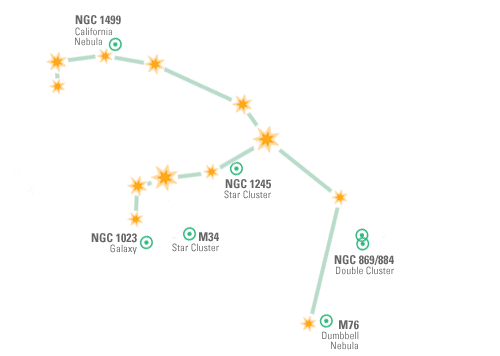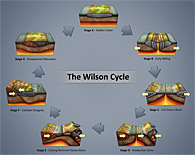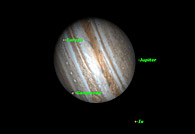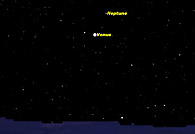 |
|||||||||||||||||||||||||||||||||||||||||||||||||||||||||||||||||||||||||||||||||||||||||||||||||||||||||||||||||
For education orders please call 1-877-290-8256. Welcome again to our monthly newsletter with features on exciting celestial and earth science events, product reviews, tips & tricks, and a monthly sky calendar. We hope you enjoy it!
I discovered that this event would take place in one of my two major sources of astronomical information, the Observer’s Handbook of the Royal Astronomical Society of Canada. First published over a century ago, the 2012 edition contains 352 pages of densely packed data on astronomy. There is no other reference book, and nothing on the internet to compare to it. Each year I eagerly await its arrival in my mailbox, and spend the next year poring over it for tidbits of astronomical information.
One of the most heavily thumbed sections of my Handbook is “The Sky Month by Month,” a compilation by date of interesting events in the sky. When I looked at the pages for January, this event popped out at me. Wouldn’t it be interesting, I thought, to see the brightest and the faintest planets in my telescope at the same time? Venus has been a brilliant “evening star” for a couple of months now, and will continue to grow brighter until it reaches its maximum on April 30, moving on towards inferior conjunction on June 6, when it will actually pass between us and the Sun. Meanwhile, Neptune has been moving along on the outer edge of the solar system towards superior conjunction with the Sun on February 19. They meet up on the night of Friday January 13 at 7 h UT. On the 13th, Venus will have a magnitude of –4.03 on the topsy-turvy brightness scale astronomer’s use, while Neptune will be +7.95. a total difference of 11.98 magnitudes. What does that mean? A difference of 5 magnitudes on this logarithmic scale equates to 100 times difference in brightness, so a difference of 12 magnitudes amounts to about 100,000 times difference! Venus will be 100,000 times brighter than Neptune. Very interesting on paper, but my next question was whether I could actually see this event in the sky. To find out, I turned to my other major source of astronomical information, Starry Night. The big question was when could I observe this event, and this is where Starry Night came to the rescue. The Handbook gave the time of conjunction as 7 h UT. Here I knew I was in trouble because that’s 2 a.m. in my time zone, Eastern Standard Time, and Venus would have set long before. I did a quick check in Starry Night around 7 p.m. on January 12 and 13, the dates on either side of the event, to see which would give me the closest distance between Venus and Neptune. On January 12, they were 1° 20’ apart (as measured by Starry Night’s separation cursor) and on January 13, 1° 09’, so the 13th was the better date. Now the challenge was to find the best time to observe the event. I have a very low western horizon, so that wasn’t a problem. Neptune would be very faint, around 8th magnitude, so I needed a time late enough that it would be visible, but not so late that it would be too low in the sky and obscured by distant haze over Georgian Bay. There are several ways to figure out when twilight is over, when the sky is truly dark, in Starry Night. The quick and dirty way is to just look at the screen and see whether the sky background is dark blue or black. The scientific way is to check the altitude of the Sun: –6° is the end of civil twilight, –12° is the end of nautical twilight, and –18° is the end of astronomical twilight, the one we want here. At my location, the Sun will reach –18° altitude at 6:46 p.m. I’ve discovered another way to find the exact time of astronomical twilight in Starry Night. I turn on the NGC objects and then watch for the time when they appear. I discovered years ago that Starry Night is programmed to only show all the NGC objects when astronomical twilight is over. It will show some of the brighter NGCs before twilight is full, but not all those little galaxies. So, all the indications are that the optimum time to observe this close conjunction of bright and faint will be around 6:45 p.m. on January 13 for my location. In this case, your mileage will definitely vary, because twilight is very sensitive to the observer’s location. So, you will need to use your Starry Night to find the optimum time for your location. It will be interesting to see how it varies from one place to another. Geoff Gaherty
Occultations of planets and bright stars are by the Moon unless noted otherwise. General locations are given for these occultations. For observers outside these locations, close conjunctions of the Moon and objects may be observed. All times are given in Universal Time (UT). To calculate the time for your location, use the following table. Take the UT time and add the time in the table for your time zone. Time Zone Conversion Table
Geoff Gaherty
No, that's not an ancient Mayan prophecy but, according to astronomers, a scientific truth. Stars, like people, have a definite life span and like people, different stars have different life spans. Last month we saw that during most of a star's life, it stays on the Main Sequence of the H-R Diagram as shown below.
During most of its life, a star's stable existence is governed by two opposing forces. Gravity pulls the solar material inward, toward the center. Radiation pressure caused by the tremendous energy released during fusion pushes solar material outward. Once these two processes are in equilibrium, the star maintains a more-or-less uniform size and luminosity for a few billion years. But, eventually the nuclear fuel runs out—the hydrogen in the core of the star has been fused to helium. The decrease in energy output causes the core to contract as gravity now triumphs over radiation pressure. Paradoxically, this causes the core to heat up. The star now expands and the much larger surface area decreases in temperature. No longer on the Main Sequence, the star has become a Red Giant. Eventually a high enough temperature is reached to cause the helium to fuse into carbon. Although life on Earth will become uncomfortable long before, drastic changes will happen as the Sun enters the Red Giant phase. The expanding atmosphere will first swallow Mercury and then may eventually expand beyond the orbit of the Earth. Rapid expansion of the solar atmosphere will cause a good portion of it to be blown out into space surrounding the remnants in a shell of gas called a planetary nebula. The central core, now the size of the Earth, becomes a white dwarf. It may shine for a trillion years as it slowly cools off to become a dark, cold mass. The night sky provides lots of examples of dying stars. Red giants, white dwarfs and planetary nebulae can be found in all parts of the sky...
Aldebaran, the brightest star in the constellation Taurus, is a star in the red giant phase. M57 is a planetary nebula in the constellation Lyra. Finder charts for these two objects are shown above.
Shown above, is a portrait of M57, the Ring nebula. It can be seen as a faint smoke ring in small telescopes. The central star has exhausted its supply of nuclear fuel and is on its way to becoming a white dwarf. Use any version of Starry Night to help you find more red giants and planetary nebulae. Next time we'll look at the fate of stars more and less massive than the Sun. Further Study Answer to last month's question: Herb Koller
The Layered Earth, includes exercises that enable students to envision Earth as a whole system, showing them tectonic plate boundaries, mountain ranges, volcanoes, earthquakes, mineral resources and biomes. Students can then dive into the Earth’s core, slice open a volcano or watch rocks transform. They’ll even witness the changing shapes of Earth’s major landmasses throughout history! As part of our collaboration, a set of custom exercises where created to go along with the various chapters.
The Starry Night team has been collaborating for over 10 years with leading science centers and planetarium makers to bring the visual beauty and accuracy of Starry Night to larger screens and domes. Starry Night software powers the leading digital planetarium systems in the educational world: Spitz Inc.'s SciDome and Science First's Digital STARLAB.
Planetariums all over the world are adopting Starry Night® as their astronomy display medium. There are over 100 Starry Night Dome owners all around the world.
2012 Venus Transit A transit of Venus will occur on June 5 - June 6 in 2012. The next transit of Venus will be in December 2117. Pedro Braganca
Perseus is the mythological hero who saved Andromeda from Cetus, the Sea Monster. Perseus used Medusa's head (lopped off in a previous adventure) to turn Cetus to stone. At this time of year Perseus is visible in the north-east after dusk. As the night progresses, it rises higher for excellent viewing, and there are a number of fabulous sights on show. NGC 869/884, the Double Cluster, is a favorite target and with good reason. Use binoculars to get an overview of this jewel box, then a low magnification in your telescope to bring out the distinctly varied coloration of stars in each cluster. Both clusters are about 7000 light-years away and are part of the Perseus arm, one of the spiral arms of our Milky Way. M76, the Dumbbell Nebula, is another favorite among observers because of its obvious hourglass/dumbbell shape. It's faint and small but responds well to magnification. Averted vision will help you see its two distinct lobes and nebulous wisps. NGC 1245, an open cluster, is best viewed with low magnification. Most of the stars are hot blue, but there are some nicely contrasting bright orange stars, cooler and older than their blue house mates. M34, another star cluster, contains about 60 members including several double-stars. The cluster is 1,500 light-years distant and is moving in the same direction through space as the Pleiades. NGC 1023, an very elongated looking galaxy, hangs in space roughly 30 million light-years from the back of your eye. From that distance it's surprisingly bright, especially the middle. Try all magnifications to pick out structure and details. NGC 1499, the California Nebula, is a large emission nebula. Under dark skies, it's bright enough to see with the naked eye. Use low magnification and a nebula filter if you have one. See if you can make out the shape of the state that gives the nebula its name. Sean O'Dwyer
|
JAN 2012
|
||||||||||||||||||||||||||||||||||||||||||||||||||||||||||||||||||||||||||||||||||||||||||||||||||||||||||||||||

|
|||||||||||||||||||||||||||||||||||||||||||||||||||||||||||||||||||||||||||||||||||||||||||||||||||||||||||||||||
|
|||||||||||||||||||||||||||||||||||||||||||||||||||||||||||||||||||||||||||||||||||||||||||||||||||||||||||||||||
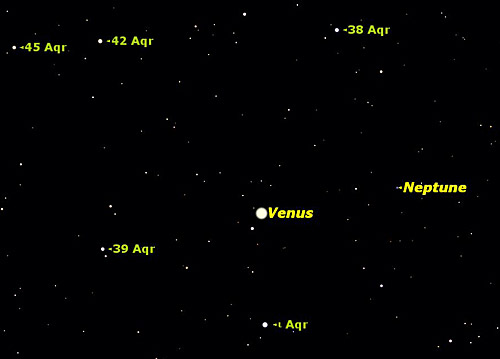
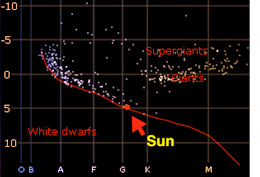 We also learned that how long a star lives depends on its mass. Stars like our Sun should live for about ten billion years. With the Sun's age estimated at five billion years, there is no need to panic yet!
We also learned that how long a star lives depends on its mass. Stars like our Sun should live for about ten billion years. With the Sun's age estimated at five billion years, there is no need to panic yet!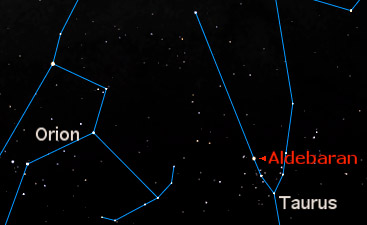
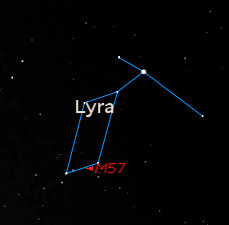
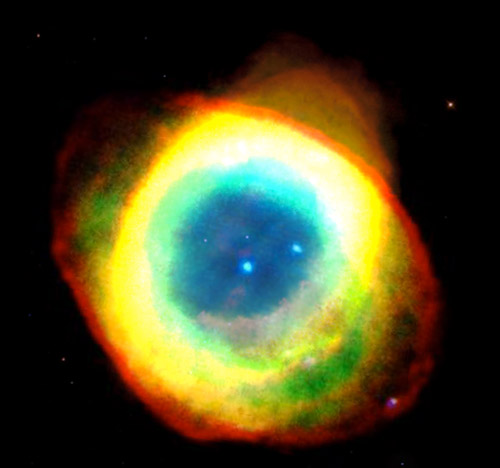
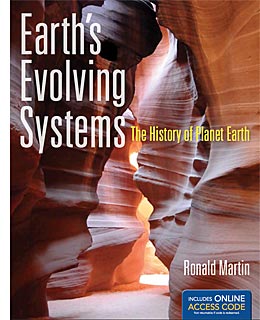 Publisher Jones & Bartlett newest Earth science textbook titled “Earth’s Evolving Systems: The History of Planet Earth” by Ronald Martin includes access to The Layered Earth.
Publisher Jones & Bartlett newest Earth science textbook titled “Earth’s Evolving Systems: The History of Planet Earth” by Ronald Martin includes access to The Layered Earth.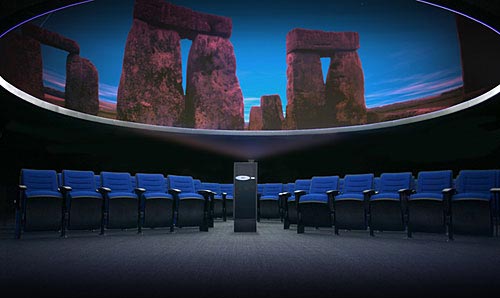
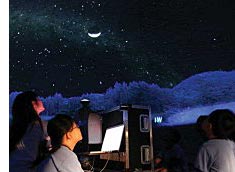 Starry Night® is known around the world as the most popular software for classroom and desktop astronomy. But you might be surprised to know it’s fast becoming an important tool for planetarium visualization.
Starry Night® is known around the world as the most popular software for classroom and desktop astronomy. But you might be surprised to know it’s fast becoming an important tool for planetarium visualization. Starry Night®’s database of stars, galaxies, 3D models and other deep sky objects is realistically projected in an immersive full-dome theater environment. “Starry Night® is the perfect platform to teach students about the complex universe we live in.” says Scott Huggins, Marketing Director for Spitz. “The space science curriculum is so comprehensive, there’s almost nothing we can’t show. It offers a thousand times more teaching capability than traditional planetarium projectors.”
Starry Night®’s database of stars, galaxies, 3D models and other deep sky objects is realistically projected in an immersive full-dome theater environment. “Starry Night® is the perfect platform to teach students about the complex universe we live in.” says Scott Huggins, Marketing Director for Spitz. “The space science curriculum is so comprehensive, there’s almost nothing we can’t show. It offers a thousand times more teaching capability than traditional planetarium projectors.”